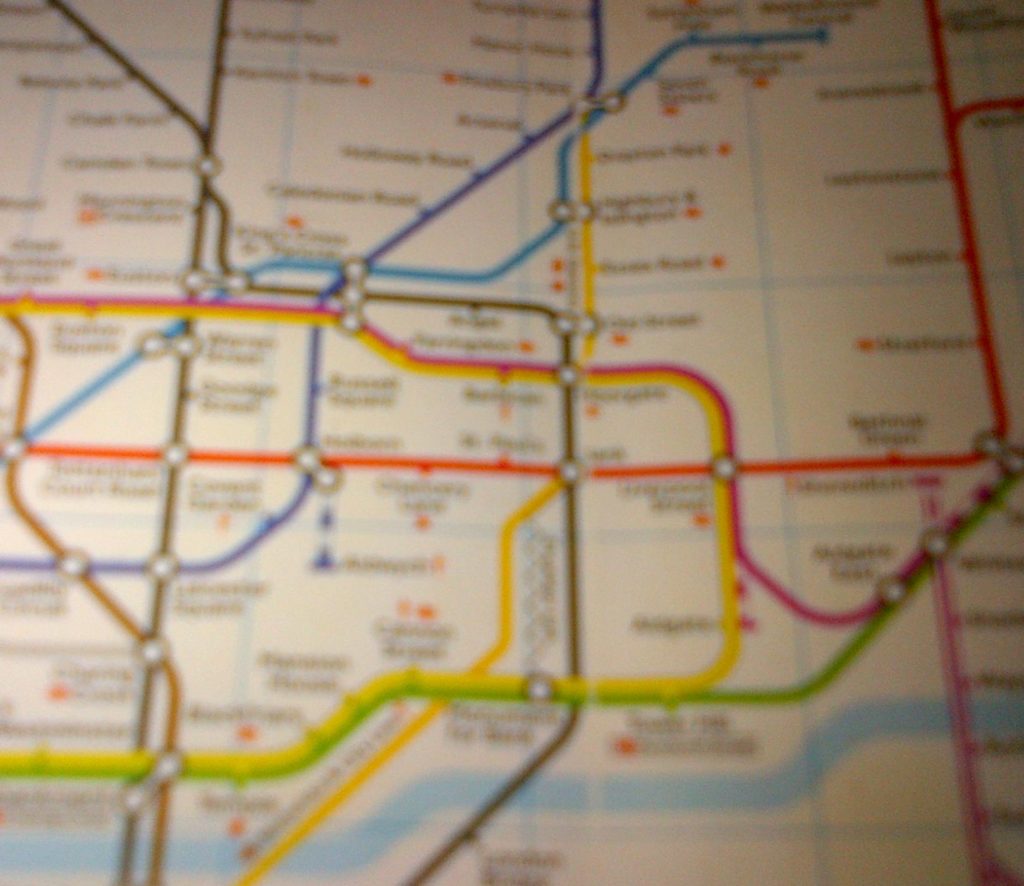A most important thing to do when in London is to buy an Oyster Card so you can travel on the London Underground (sorry, but it’s always called “the Tube” in this town!) without having to buy tickets every time.
And if you are staying for more than a few weeks, then the London A to Z guide is indispensable. In this age of the i-phone and google maps, it is still very important to have an A to Z. We know a place not by blindly following an app – we know a place by reading maps, looking up the streets, being able to put the location of an address into context (which part of the city is it), and all that. That, for us, is about human intelligence!
A diversion: In many ways, the “old” system of reading maps and working out places and how to get from one spot to the next helps us retain our knowledge about a city. We become a much more “skilled” traveller as we travel more because we know how to “tackle” and “orientate” ourselves when we go to a new city. Similarly, we add to our knowledge about a city every time we revisit because we don’t have to start from zero and we have “retained” knowledge from the previous travels. Isn’t it possible that our reliance on i-phones has enabled a “de-skilling”? At a time when the human intelligence vs machine intelligence debate is raging, we find neuroscience research telling us that “if we don’t use [brain neural connections], we lose it“.
Allowing a further diversion: the great thing about the Tube is its extensive network, with its 11 lines and 270 stations. The first underground line is now parts of the Northern Line (yes the black one!). The system is thought today to be the third largest in the world in terms of length, after the Beijing subway and the Shanghai Metro, and the third busiest in Europe, after Paris and Moscow.
Well, the Tube is the one constant in the lives of many Londoners. And perhaps the second constant is a Tube strike. I saw one of the funniest tweets for a while during one of the London Underground’s recent strike:
Got this great app to pass the time during severe #tubestrike travel delays. It’s called a book. You read all the words and then turn pages.”
A tip: no need to take the tube if going from Leicester Square to Covent Garden, it’s a 260 metre distance, the shortest within the Tube system. Or, if you happen to be travelling on the blue line and need to go to Leicester Sq, just get out from Covent Garden and walk (anyway, Covent Garden station is so much easier to manage).
A second tip: be careful when on the Northern Line – from Euston going south, it splits and travels through 2 “branches”, the “Charing Cross” branch and the “Bank” branch (more east) before it combines at Kennington, in the south, again.
The London Underground has modernised its image in recent years, first introducing the Oyster Card in 2003 (though contactless stored-value cards have been used in a number of cities for some years) and also commissioning a number of programmes such as Art on the Underground and Poetry on the Underground. These have been popular.
But the most significant change has been that the Circle Line (yellow!) is no longer a simple circle! I have to be careful I don’t end up going to Hammersmith when I intend to just go to Nottinghill Gate!
P.S. There are many different versions of the Tube Map apart from the official one. I’ll just mention this map of free toilets in and around the Tube stations – it looks like Transport for London has moved with the times and become attuned to customer needs! (you can download it at: https://www.tfl.gov.uk/cdn/static/cms/documents/toilets-map.pdf)





